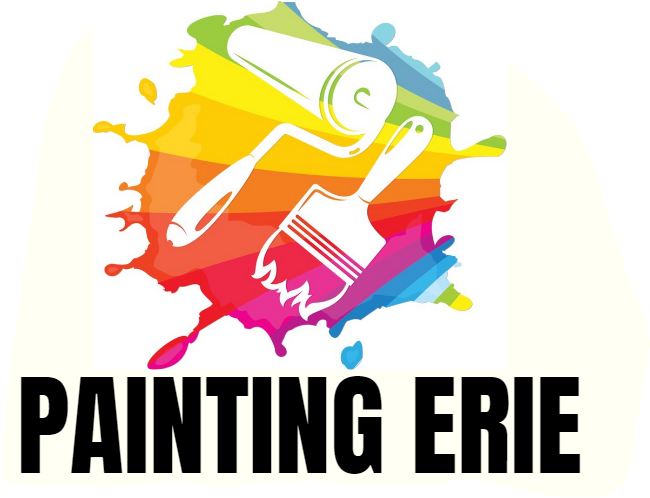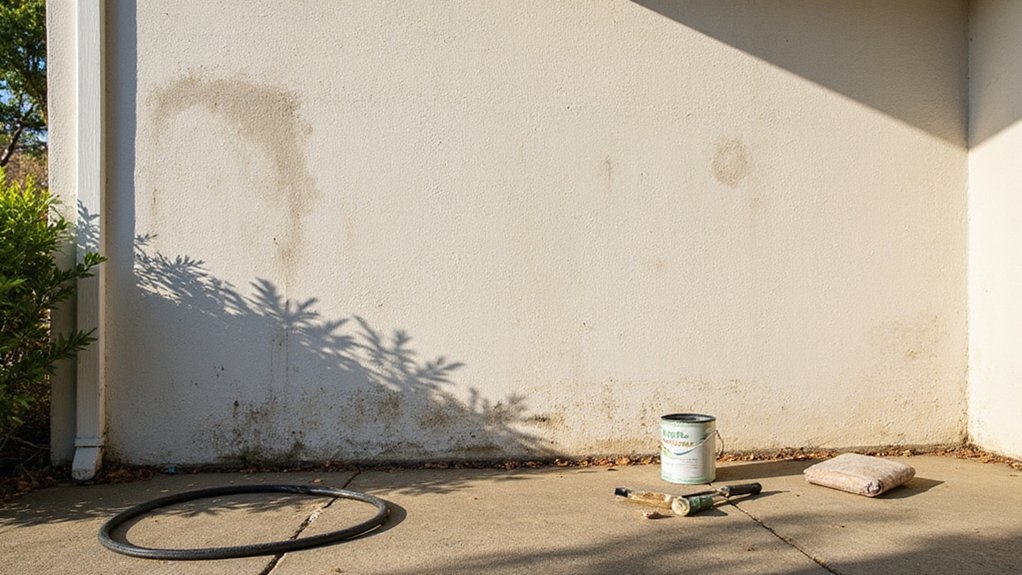As you prepare to give your home’s exterior a fresh new look with a coat of paint, you’re likely wondering if pressure washing is a necessary step. The answer is a resounding yes – but why? Pressure washing removes dirt, mildew, and other contaminants that can prevent paint from adhering properly, leading to peeling and flaking. But it’s not just about aesthetics; pressure washing also reveals underlying issues that need attention. So, what’s the best approach to pressure washing before painting, and what potential risks should you be aware of?
Benefits of Pressure Washing Before Painting
Because a clean surface is essential for a successful paint job, you’ll want to ponder pressure washing your home’s exterior before painting. This indispensable step removes dirt and debris that can compromise the quality of your paint job.
When you pressure wash, you’re not only washing away dirt, but also mildew, mold, and other substances that can affect paint adhesion. By removing these contaminants, you’ll improve paint adhesion, ensuring a stronger bond between the paint and the surface. This leads to a more durable and long-lasting finish.
Additionally, pressure washing helps to prevent peeling and flaking, common issues that can arise when paint is applied to a dirty surface. By taking the time to pressure wash before painting, you’ll set yourself up for a successful and stress-free painting project. Moreover, pressure washing can reveal underlying issues like mold and mildew that need to be addressed before repainting to protect the structure of your home.
Preparing Your Home’s Exterior for Painting
Typically, homeowners overlook the importance of properly preparing their home’s exterior for painting, which can lead to subpar results. To avoid this, you’ll want to make certain your home is ready for a fresh coat of paint.
Seal any cracks and crevices: Caulk and seal any gaps around windows, doors, and joints to prevent water from seeping in and causing damage.
Clear debris from surfaces: Remove any dirt, leaves, or other obstructions from your home’s exterior to guarantee a smooth painting process.
Repair damaged siding: Fix any broken or rotten siding to create a smooth surface for painting.
Tape off trim and fixtures: Protect any areas you don’t want to paint, such as trim, gutters, and downspouts, with masking tape or painter’s tape.
Consider fence preparation too: Just like your home, fences should be cleaned of dirt and mold before painting to ensure a durable and vibrant finish.
Types of Siding That Require Pressure Washing
You’ve prepared your home’s exterior for painting by sealing cracks, clearing debris, repairing damaged siding, and taping off trim and fixtures. Now, it’s critical to determine if your siding necessitates pressure washing.
Vinyl siding materials, for instance, can greatly benefit from pressure washing to remove dirt, grime, and mildew. This type of siding is prone to stains and discoloration, and a good pressure wash can restore its original appearance.
Wood siding options, such as cedar or pine, also require pressure washing to remove dirt, mold, and mildew that can cause wood rot. Additionally, pressure washing can help to remove old finishes, revealing a clean surface for painting. By pressure washing these types of siding, you’ll achieve a strong bond between the old surface and the new paint, resulting in a longer-lasting finish.
Potential Risks of Pressure Washing
While preparing your home’s exterior for painting, it’s imperative to acknowledge the potential risks associated with pressure washing, as improper techniques or equipment can cause significant damage to your siding, windows, and surrounding landscaping.
When not done correctly, pressure washing can lead to:
- Damage to siding: Stripping away protective coatings, etching surfaces, or even creating holes in certain types of siding.
- Surface contamination: Forcing dirt and debris deeper into surfaces, making it harder to clean and potentially causing long-term damage.
- Window damage: Cracking or shattering windows, especially if they’re old or already compromised.
- Landscaping destruction: Destroying plants, flowers, and even damaging surrounding hardscapes like patios or walkways.
It’s vital to weigh these risks against the benefits of pressure washing and consider alternative methods or consulting a professional to guarantee a safe and effective cleaning process.
Alternatives to Pressure Washing
Many homeowners opt for gentler, more targeted cleaning methods to avoid the risks associated with pressure washing. You can consider soft wash methods, which use a low-pressure spray to clean your home’s exterior. This approach is particularly effective for surfaces that can’t withstand high pressure, such as stucco, vinyl, or wood.
Another option is chemical pretreatment, where a solution is applied to the surface to break down dirt and grime. This method is ideal for homes with heavy mildew or algae growth. By choosing a gentler cleaning method, you can guarantee a safer and more effective cleaning process that won’t damage your home’s exterior. Additionally, these alternatives can be just as effective as pressure washing in preparing your home for painting.
Tips for Safe and Effective Pressure Washing
When you do decide to use pressure washing, it’s critical to take the necessary precautions to avoid harming your home’s exterior. You want to make certain you’re using the right techniques to get the job done effectively and safely.
To achieve this, follow these tips:
- Choose the right nozzle: Select a wide-angle nozzle (25-40 degrees) for general cleaning and a narrow-angle nozzle (0-15 degrees) for stubborn stains or tight spaces.
- Use effective cleaning techniques: Work from the bottom up to avoid streaks and marks. Keep the nozzle 12-18 inches away from the surface and maintain a consistent distance to avoid damage.
- Test pressure settings: Start with a low pressure setting and gradually increase as needed to avoid damaging surfaces or stripping paint.
- Wear protective gear: Wear gloves, safety glasses, and a mask to protect yourself from debris and harsh chemicals.
How to Determine If Pressure Washing Is Necessary
Can you afford to skip pressure washing before painting your home’s exterior? Probably not, if you want a smooth, long-lasting finish. To determine if pressure washing is necessary, perform a surface condition assessment.
Walk around your home and inspect the exterior surfaces for dirt, grime, mildew, or old paint. Check for any peeling, flaking, or chalking, as these will affect paint adherence factors. If you notice any of these issues, pressure washing is a must.
Additionally, consider the age of your home and the last time it was painted. If it’s been a while, dirt and grime have likely built up, making pressure washing essential. By taking the time to assess your home’s surface condition, you’ll guarantee a strong bond between the old surface and new paint, resulting in a beautiful, long-lasting finish.
Frequently Asked Questions
Can I Use a Regular Hose to Wash My Home’s Exterior Instead?
You can use a regular hose, but it won’t effectively remove dirt and grime, compromising surface preparation requirements. Plus, it may not address water consumption concerns, making a pressure washer a better option for a thorough, eco-friendly clean.
Will Pressure Washing Damage My Home’s Landscaping or Gardens?
When you pressure wash, be mindful of your landscaping and gardens – take steps to protect nearby vegetation from harsh chemicals and avoid overspray damage by using a wide fan tip and keeping the nozzle at least 12 inches away.
Can I Pressure Wash My Home’s Exterior in Direct Sunlight?
When pressure washing your home’s exterior, avoid direct sunlight to prevent streaks and uneven drying. Instead, you’re best to wash in the early morning or late afternoon, using a proper timing and efficient technique to get the job done effectively.
How Often Should I Pressure Wash My Home’s Exterior?
You should incorporate pressure washing into your seasonal cleaning schedule, ideally every 6-12 months, to maintain your home’s exterior. Remember to use proper pressure settings to avoid damage, and consider factors like climate, vegetation, and traffic when determining your frequency.
Can I Rent a Pressure Washer or Should I Hire a Pro?
You’re wondering if you should rent a pressure washer for a DIY job or hire a pro? If you’re comfortable with diy pressure washing and have the time, renting might be a cost-effective option, but for a thorough, hassle-free job, consider hiring a professional pressure washing service.

